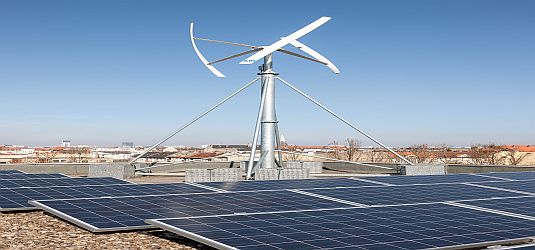
Schneider Electric
The International Energy Agency says that energy efficiency drives are beginning to have a positive impact, saving $540bn last year, but more vigorous policies required in order to meet climate goals.
Hitting the climate targets laid out in the Paris Agreement requires a multi-pronged approach that involves decarbonization, a wider adoption of renewable energy sources, and better energy efficiency – and the world has become much cannier at using its energy in recent years, finds a new report from the International Energy Agency (IEA).
In its latest paper, titled Energy Efficiency Market Report 2016, the IEA finds that energy intensity – the amount of energy used per unit of GDP – improved globally by 1.8% in 2015, which essentially means that economies now require less energy than previously in order to grow.
These gains are more starkly apparent in emerging and less-developed economies, and especially profound in China, which has improved its energy intensity ratio by an encouraging 5.6% over the past year.
In 2014, the global improvement was 1.5%, which indicates that the world is indeed becoming smarter and less wasteful with its energy. The performance in 2015 was even more impressive, said the report, given the low energy prices available globally. Typically, when power is cheap, the desire to save energy is usually dampened.
However, existing energy efficiency policies appear to be having the desired effect of walking the world towards a more sophisticated relationship with available energy. The IEA data shows that global car fuel economy standards – relatively new on the scene – last year helped to reduce the consumption of oil by 2.3 million barrels a day, or approximately 2.5% of the global oil supply.
Efficiency standards now cover 30% of global energy use, the IEA said, up from just 11% in 2000, while improvements in energy efficiency since the millennium meant a global saving of $540 billion in energy expenditure last year.
This trend in intensity gains is more apparent in emerging, non-OECD countries as they “move center stage in the clean energy transition, fighting air pollution and driving renewables and energy efficiency uptake,” said IEA executive director Fatih Birol.
China’s progress is particularly impressive. Primary energy demand in China grew just 0.9% last year, while the economy grew 6.9%. Had China not pulled more than its weight, energy intensity improvements globally would have been just 1.4% last year.
Fight not yet won
Despite these encouraging steps, the IEA data reveals that the world need to up its energy intensity improvement to 2.6% in order to maintain the Paris Agreement goal of limiting global temperature increases to below 2C by 2050.
By 2040, one-third of all emission reductions required to reach global climate goals must come from energy efficiency, the IEA calculates – meaning being smarter with energy is just as important to the world’s atmosphere as lowering the use of fossil fuels and adopting clean energy such as solar and wind.
“Energy efficiency is the one energy resource that all countries possess in abundance,” said Birol. “I welcome the improvement in global energy efficiency, particularly at a time of lower energy prices. This is a sign that many governments push the energy efficiency policies, and it works.”
The IEA report also outlines ways in which governments can play a more central role in driving energy efficiency, demonstrating the efficacy of strengthening policies designed to squeeze more potential gains from current energy sources.
Source: PV Magazine. Reproduced with permission.










